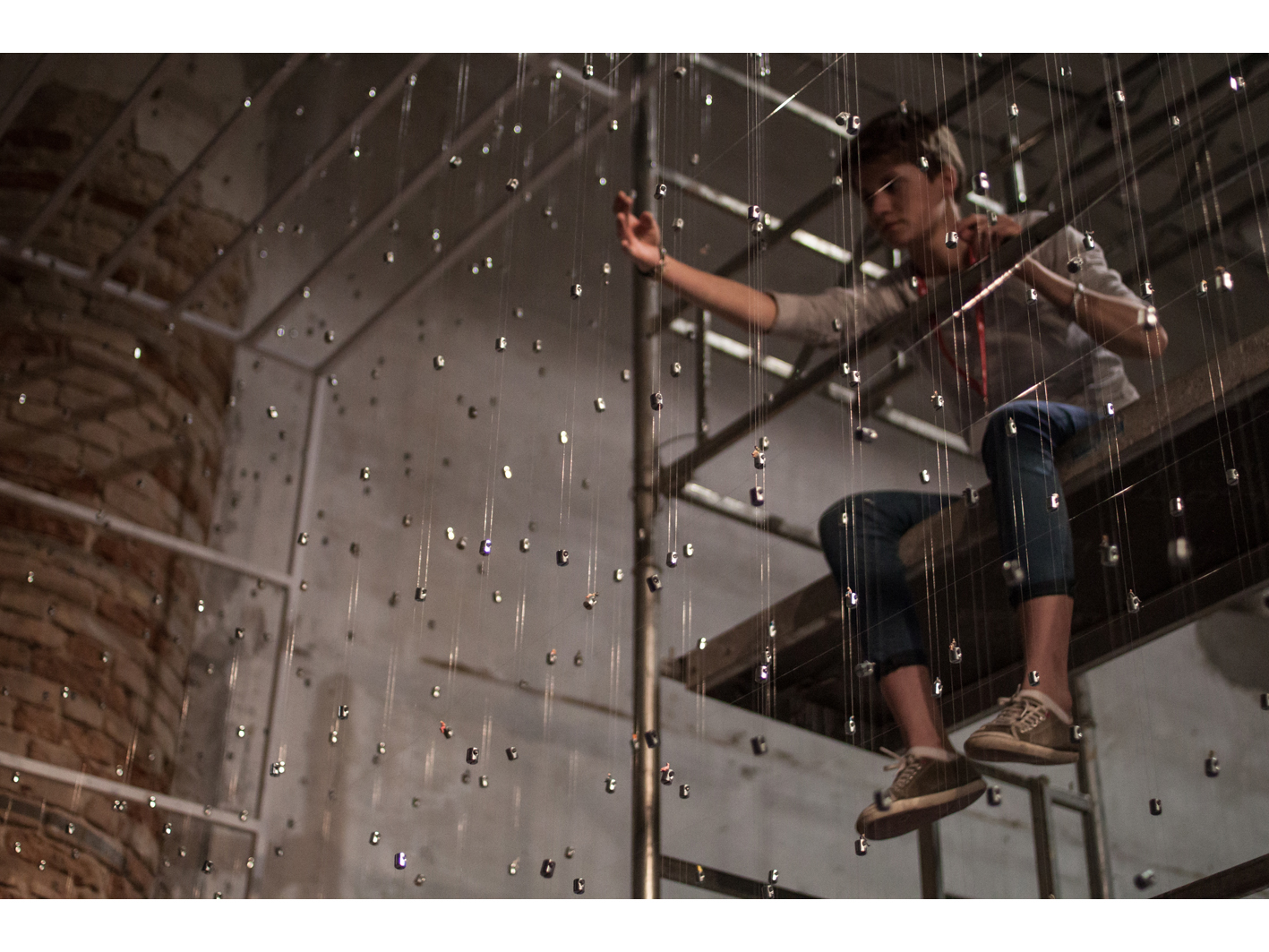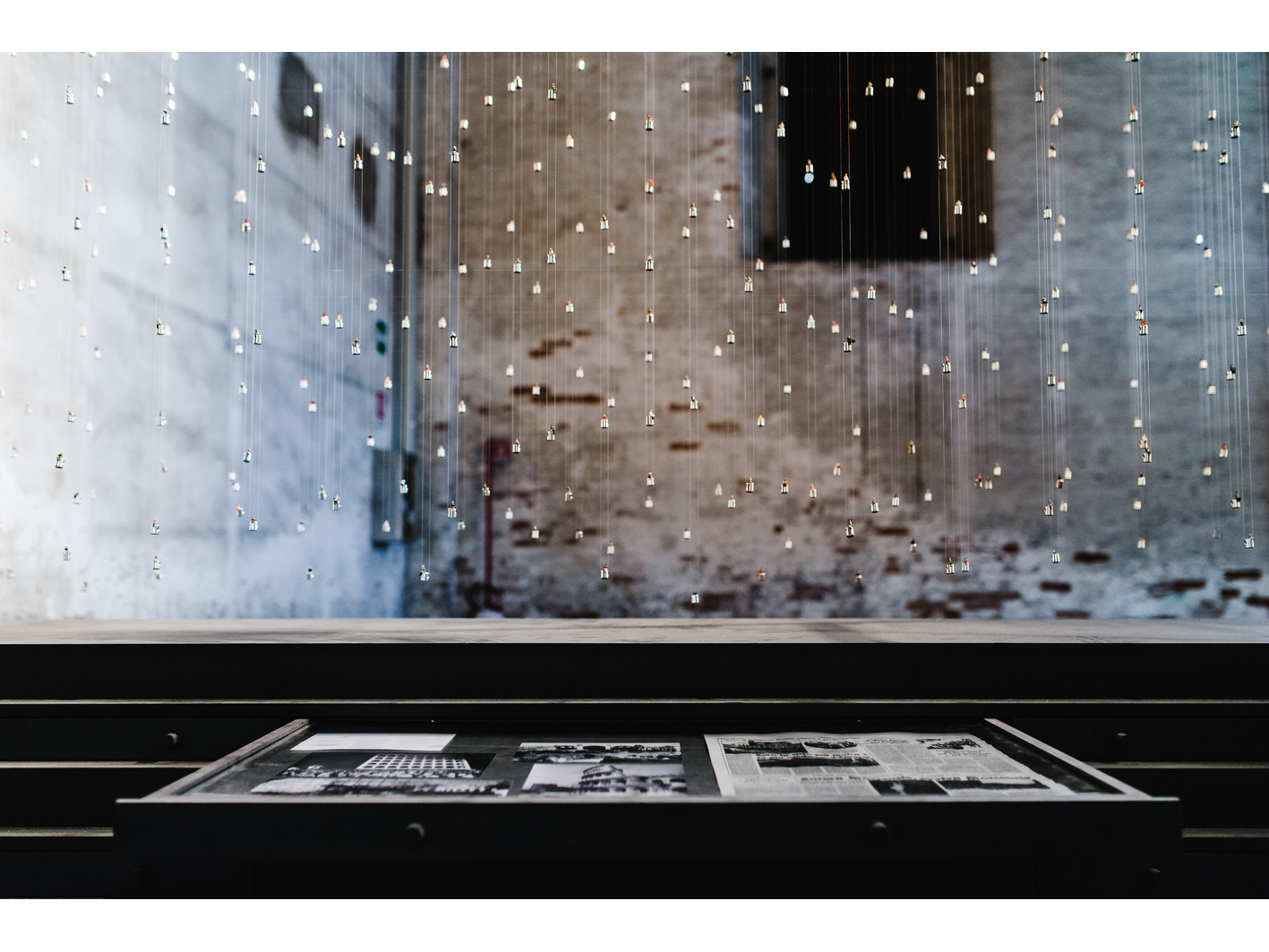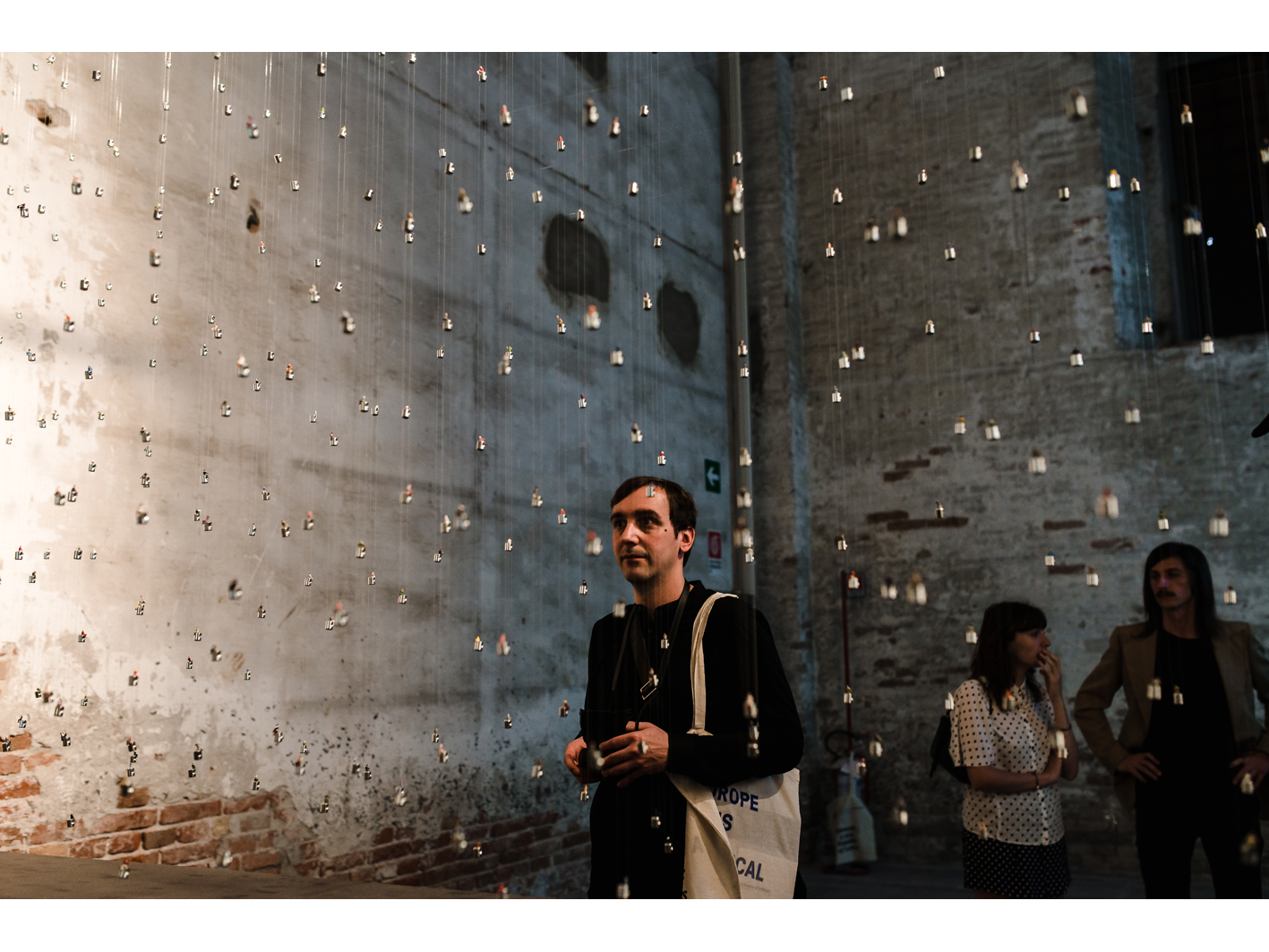Effimero
U67 did the art direction and exhibition design of the installation for the Léa-Catherine Szacka’s research project “Effimero: Or the Postmodern Italian Condition” presented within the section Monditalia, on display at the 14th International Architecture Exhibition – la Biennale di Venezia.
The installation has been designed to suggest ideas of theatricality and lightness associated with collective if not hedonistic ephemeral spatial experiences that, by reinvesting historical ruins, industrial and proto-industrial buildings, or entire city centres, marked Italy’s postmodern condition. It is a monumental device, that aims to connect the research project to the scale of the Arsenale.
The lower part of the installation forms a physical archive. It consists of a series of five rows, of three drawers each, displaying a collection of research material on the various case studies (original drawings and photographs mixed with pages from the leftist newspaper l’Unità and a series of quotes extracted from interviews or documentary films). Each row of drawers explains synoptically one of the case studies: thus architectural and social experience are explained using historical documents.
The volume of the archive (1,2 x 3,5 x 1,1 m) has a section made of five stairs with drawers opening in both directions. It allows people to interact with the installation, and avoids creating a backside. The displaying mode also suggests the ephemeral nature of the work under study i.e. only documents endured.
Going upward with the eyes, visitors discover a network of 1,3 kilometres of nylon thread hung on a white steel structure made of 25 mm of section. This elaborate temporary structure, with very clear geometry, creates a network of 1850 nodes, each marked by a steel cylinder bolt. As a theatrical reminder of ephemeral projects such as the cinema screenings at Basilica di Massenzio, a multitude of 1000 seated man in scale 1:87 inhabit the structure. Men, women, and children, all with different backgrounds, seating together on the bolts. The white structure also frames and encloses the Arsenale’s column that is highlighted by the change of scale produced by the proximity to the 1:87 men.
Visitors get across the installation through a thin passage between the archive and a shorter section of it, giving a sense of continuity into the adjacent wall. The section serves as a collector for flyers containing factual information and a time line, allowing visitors to grasp quickly and synthetically the essence of this ‘ephemeral season’ and its relation to the socio-political context of the ‘year of leads’.
Effimero: Or the Postmodern Italian Condition
is an ongoing research project by Léa-Catherine Szacka
with:
U67 (art direction and exhibition design)
Valérie Paquette (graphic design)
Julien Sage-Thomas (support)
Supporters:
The Oslo School of Architecture and Design (AHO)
Delegazione del Québec a Roma
Preiser
Canada Council for the Arts
Drawings by U67
Photos by Valérie Paquette (Opening)
Margherita Borroni + Marco Gambarè (Set up)
Video: Marco Gambarè and Margherita Borroni for the shooting, Manuél Mister (Studio Baako) for the post-production and Mr. Squirrel for the soundtrack
A special thanks to:
Margherita Borroni
Marco Gambarè
Davide Masserini
Maura Stefani
Roberto Zini
Tommaso Trivellato
It.Works





















